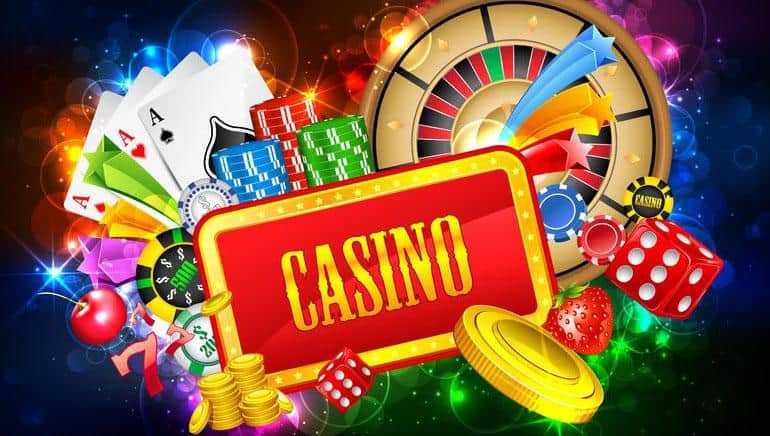How Casino Games Utilize Color and Layout to Entice Players

In a lively and stimulating world of casinos, where fortune and strategy intertwine, hues and aesthetic play a critical role in attracting players. As soon as visitors step inside a casino or log into a gaming website, they are enveloped in a visual feast that captures their attention and entices them to explore more. Bright colors, engaging graphics, and creative layouts are meticulously crafted to create an atmosphere of thrill and expectation, ultimately enhancing the gaming experience.
As players navigate through the dynamic landscape of casino games, they encounter a range of designs that not only serve visual purposes but also influence emotions and decision-making. Hues like scarlet and yellow symbolize wealth and fortune, while calm navy and emeralds can create a much relaxed environment. Grasping how these elements work together enables casinos to create an inviting and energizing atmosphere that encourages players to engage with the games, invest more time at the tables, and increase their overall enjoyment.
The Science of Color in Gambling Games
Color plays a key role in the development of casino games, affecting players' feelings and behaviors. Vivid and striking hues, such as scarlet and yellow, are often used to incite enthusiasm and draw notice. These shades create a sense of pressure and vitality, encouraging players to involve themselves more readily with the experience. By thoughtfully selecting tints, designers aim to inspire emotions of satisfaction and expectation, which can enhance the complete gaming experience. vinbet
Distinct hues also have psychological meanings that can impact how players perceive their possibilities of winning. For example, emerald is commonly associated with fortune and abundance, making it a popular choice in activities like the roulette wheel and poker tables. This association can result gamblers to feel more positive and confident in their gaming, ultimately encouraging them to stake more. Understanding these links allows game creators to create environments that enhance player happiness and retention.
In addition, the interface of gaming interfaces often uses color gradients and differing hues to direct players' responses. For example, winning outcomes may be accentuated with striking, contrasting hues, creating a visual incentive. This method strengthens successful results and promotes repeated gameplay. By utilizing color psychology, gambling establishments can develop games that not only captivate players but also keep them involved and invested in their game experience.
Design Features that Engage Gamers
The visual appeal of gambling games is primarily influenced by the use of bold colors. Bright and contrasting colors are deliberately chosen to create an appealing atmosphere that captures attention. For example, reds and golden hues often signify good fortune and wealth, which is why they are common in the color schemes of slot machines and game surfaces. These colors not only draw players in, but they also evoke emotions related to thrill and anticipation, enhancing the overall gaming experience.
In addition to color, the design and layout of gambling games play a significant role in player attraction. Games are designed to be user-friendly, ensuring that players can easily understand the guidelines and gameplay. https://vinbet.click/ User-friendly interfaces, along with captivating graphics and motion, help maintain gamer interest and promote extended play sessions. The physical elements, such as the texture of the controls and the sounds of the games, also contribute to a holistic sensory experience that keeps players engaged.
Finally, conceptual elements in gaming design can greatly influence gaming decisions. Many gambling games are inspired by media, fairy tales, or adventure themes, featuring symbols and characters that connect with players. These themes create a sense of engagement and connection, making each game feel distinct. When players feel a connection to the concept, they are more likely to choose that game over others, leading to higher participation and excitement within the gambling environment.
Case Studies: Effective Gambling Slot Designs
One key example of effective gambling game design is the well-known slot machine series themed around blockbuster movies. Games such as those based on the The Wizard of Oz and Game of thrones utilize bright colors and high-quality graphics to enthrall players in well-known narratives. The use of lively visuals and captivating sound effects captures the focus of players, creating an emotional connection to the theme. This approach not only promotes longer play but also enhances the overall gaming experience, resulting in increased player retention.
Another notable case is the application of color psychology in table games like blackjack and roulette. Casinos often design these games with rich reds and greens, colors traditionally associated with luck and wealth. For instance, the emerald felt on a blackjack table provides a calming effect, while the crimson accents in roulette invite anticipation. This thoughtful use of color helps to create an inviting atmosphere that stimulates players to join in, addressing their psychological impulses and increasing their enjoyment.
Finally, online casino games that include community features and vivid, dynamic designs have experienced remarkable success in engaging players. Games like Zynga's Poker and Slot-O-Mania leverage striking colors and playful animations to forge an inviting online environment. The integration of leaderboards, social sharing options, and in-game rewards promotes competition and community, drawing players in for longer sessions. Such designs not just make the games visually enticing but also emphasize social connectivity, a key factor in player retention and engagement within digital casino environments.
